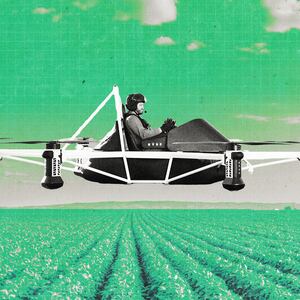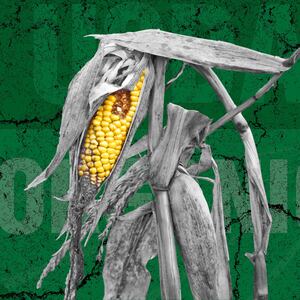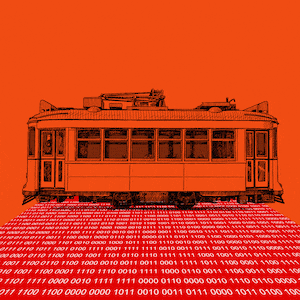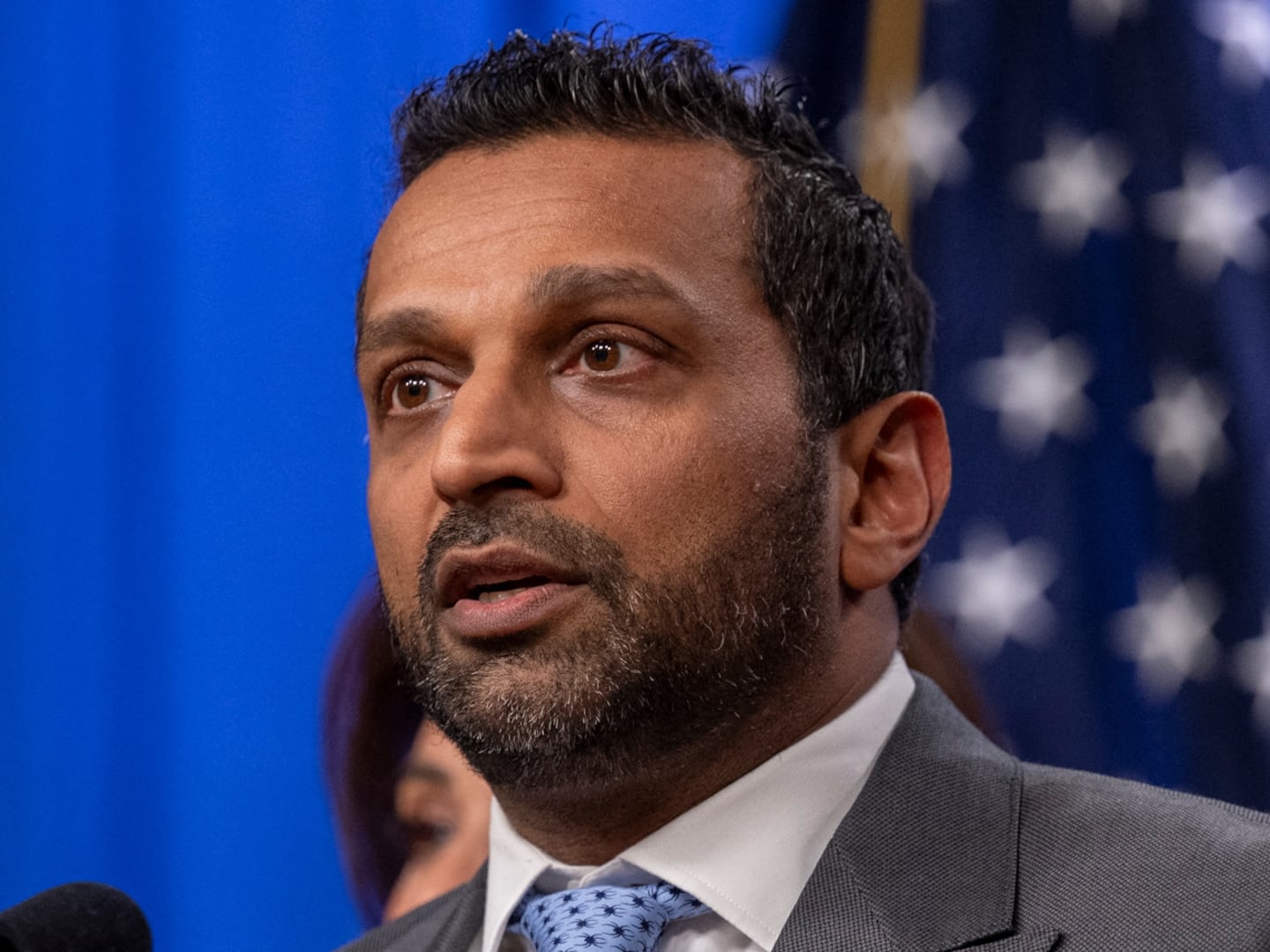Anyone who grew up in a rural part of the country can tell you that the sun rarely catches farmers sleeping. After all, a farmer’s work is never done—and that might never change.
However, if you are a farmer, your life might look just a little different someday soon: you wake up around 5 a.m. or maybe even earlier. After getting dressed, you grab a cup of coffee and breakfast to fuel up for the day ahead. As you do, you run through a checklist of priorities and to-dos for the day: feed and water the animals, clean their sheds and pens, and tend the crops. But first, you need to head out to the barn.
There, after making your way past the tractors and harvesting equipment, you arrive at a platform with a large drone on it underneath an opening in the ceiling. You swap out yesterday’s batteries with some fresh ones from a charging terminal. Then, finally, you pull up an app on your phone and speak into it. “Check the soil status of the soybeans before watering the cornfield.” Soon, you hear the familiar whirring of the propellers. You step back and watch as the drone takes off out of the skylight and into the brightening morning horizon. For a moment, you watch as it climbs into the sky, before heading out of the barn and back out into the farm. No time to waste. After all, the cows aren’t going to feed themselves.
It reads like something out of a speculative sci-fi story—but it could very well soon be a reality. While there has been a lot of hype about AI in the past few months after the release of OpenAI’s ChatGPT, much of the discourse has been focused on things like fearful headlines about sentient bots, what AI means for the future of education and essay writing, how it’ll disrupt industries like writing and coding, or how private companies and entrepreneurs can capitalize on this trend like the they tried to with the metaverse and crypto.
However, some have begun to consider how exactly these new generative AIs can be leveraged beyond the obvious—and even fight climate change while feeding the world. That’s the idea behind a new pre-print penned by a multi-university team of data and machine learning researchers on how emerging advanced AI like GPT-4 can be leveraged for agriculture, while also helping fight climate change.
“Climate change poses a serious threat to agriculture activities,” Jin Sun, assistant professor of computer science at the University of Georgia, Athens and co-author of the paper, told The Daily Beast in an email. “[Meanwhile], the agriculture industry also has a significant climate footprint. [AI] can help in both directions.”
An Environmental Case for AGI
Specifically, the paper argues for the use of artificial general intelligence (AGI), a term used to commonly describe the point in which AI has the learning and understanding capabilities of the human brain. The concept itself is steeped in fear of Terminator-style robot uprisings and even “God-like” intelligences. Billionaire and former OpenAI board member Elon Musk has even made numerous comments in the past hinting at his own fears about AGI and its potential to upend society. He recently told Tucker Carlson that advanced AI could lead to “civilizational destruction.”
Nevertheless, the idea of AGI has largely remained in the realm of speculation—something that will one day come, but isn’t here yet. However, Sun says that AGI is just around the corner, due to the “success of the GPT-family models.”
These models are general purpose, large-scale, and—in the case of GPT-4—multimodal, which means it accepts image and text inputs to generate text outputs. “This is significantly different from traditional AI models that are more task-specific and unable to adapt to new environments,” Sun explained.
Some researchers have already begun exploring applications for these models in the realm of health care to do everything from helping to make diagnostic decisions, to using ChatGPT to assist surgeons on the operating table. (Of course, it should be noted that no hospital in the world has reported doing such things, since they could get shut down and lose their licenses faster than you can say “Do no harm”.)
The same could be done for stewarding the Earth through agriculture and climate initiatives, the paper’s authors argue. Specifically, they make the case that AGI can possibly reduce emissions through a variety of core processes. For example, AGI could help enhance and power a new generation of agricultural robotics to perform tasks like weeding, fertilizing, harvesting, and crop scouting.
“AGI’s ability to understand natural languages and reasoning can greatly improve the interaction between humans and robots, thereby lowering the technical barriers for farmers to use agricultural robots,” the study’s authors wrote. That means, one day, the story above where the farmer commands their drones through a sentence could very well be possible.
A Robot’s Work Is Never Done
In a lot of ways, the AI revolution has already come for farming—though we just might not realize it. Today, practically every farmer in the country utilizes a war chest of sensors, AI software, and even hardware like drones to help them with their work.
“AI is already a thing in agriculture,” Daniel Kaiser, the Environmental Defense Fund’s director of agricultural innovation, told The Daily Beast. “It’s data, sensors, and how AI can be used to interpret data to give farmers better insights into management decisions.”
That’s where the true power of AI is when it comes to the environment: data. The more information that someone has about a particular stretch of land or ecosystem, the better they can take care of it. This all falls under the purview of a process known as precision agriculture. If a farmer knows, for example, the precise soil composition of their acreage, they can know what the optimal crops will grow there.
However, Kaiser said that the industry is facing a bit of a “chicken and egg” situation where farmers have all of this AI-powered data and analytics—but the hardware hasn’t caught up with them in order to do anything about it. “That’s what a lot of new startups are trying to do: they’re trying to marry the software into machines that can actually take action,” Kaiser explained.
So the future could mean things like flying drone tractors to water, fertilize, and spray herbicide over crops, or even autonomous crop harvesters that know how to pluck the most ideal-sized lemons in a grove, Kaiser said.
Beyond facilitating and enhancing cool hardware, though, perhaps the most impactful application for something like AGI to help solve things like world hunger and farming during a climate crisis is genetic engineering in plants and animals. Kaiser explained that AI is already being utilized to make identifying functional groups of genes “much more rapid.”
“It used to take months to code the genome of a wheat plant and identify functional groups. Now they can do it in a couple of weeks,” Kaiser said. He added that scientists have already done things like create breeds of crops with nitrogen fixation so it gets rid of the need to fertilize them, and create saltwater-tolerant rice.
Sun and his co-authors argue that AGI can exponentially increase the potential of this process, allowing scientists to create “supercharged” plants that can survive erratic weather patterns, resist pests and disease, and increase crop yield. All of which are “important to maintain productivity in challenging climate environments,” he said.
Farmer in the Loop
But, as with all things related to AI—especially when it comes to models like GPT—the problems posed by biases cannot be understated. These are models that are trained on massive datasets that are frequently prone to bias themselves. This means that it could result in a disproportionate amount of harm when developed and deployed without guardrails in place.
We saw this with the initial launch of ChatGPT and Bing’s AI-powered chatbot. The developers behind it seemed to rush a product out the door without considering the full ramifications of thrusting a powerful chatbot into the hands of the public.
The results were damning: People started to believe that the AI was doing things like threatening to kill them, falling in love with them, or even becoming sentient. There were even instances of the bots spreading outright misinformation—and at one point even baselessly accused a professor of sexual assault.
Extrapolate these effects to the consequential world of agriculture and land stewardship, and the impacts could be felt by people all over the Earth. “We cannot ignore its potential for bias,” Gengchen Mai, an AI researcher at UGA and co-author of the paper, told The Daily Beast. “ChatGPT has been known to make inaccurate and toxic content—which is very, very bad for some critical decision making.”
He gave the example that if we used ChatGPT for medical treatment, it could give a patient a wrong diagnosis or ignore symptoms due to biased data—something that has happened before with people of color. “And if you’re after agriculture, like farmers, it could give them wrong data and lead to the wrong decision—which means disaster.”
This underscores a refrain that AI ethicists and researchers have been practically screaming for decades: There always needs to be a human—in this case, a farmer—in the loop. In fact, everyone The Daily Beast spoke to for this story agreed that no matter how sophisticated or “intelligent” an AI is, there will be a need for a person to make sure things are going smoothly.
“You’re always going to need a human observing what’s happening,” Kaiser said. “You}re always gonna miss something with a sensor, and there’s also a lot of changes happening all the time like growing conditions and climate. There’s uncertainty to it and humans are going to be the ones who can adapt to those changes.”
So, in that way, we can take solace in the fact that there will always be a need for human stewards of the Earth, and be glad that the old adage will always be true: A farmer’s work is never done—even during a robot apocalypse.










